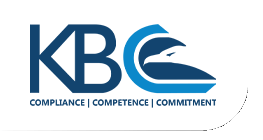By Jared Kangisser, CEO of KBC Health & Safety
As one of the most dangerous industries in the world, it is for good reason that there are strict health and safety protocols in mining. Before starting work on any project for a mining house, every individual must complete the necessary health and safety induction at each mining site. Given the high headcount for contractors at any given site, this gets complicated, costly, and time-consuming. The requirement that the induction process be repeated for each returning individual – often across multiple sites on numerous occasions throughout the mine’s lifecycle – is simply not feasible. So, what is the solution to wasted time and induction costs? A single standard induction model that supports inter-company and intra-company movements and eliminates induction duplication.
Unnecessarily repetitive
Although the rationale behind the mining site safety induction requirement is sound in theory, in practice, there is room to make it a lot more streamlined and efficient. Section 10 of the Mine Health and Safety Act, as well as the Occupational Health and Safety Act, regulates all mining activities and places a requirement on the employer to train an individual on the latest health and safety standards that apply to that mining site. Each site is empowered to run their own induction processes, if they ensure that they have covered the correct health and safety training elements of the Acts to be legally compliant. This covers elements of hazard identification and risk assessment on site and how to perform their job safely in that environment. Having to repeat this induction upon arrival and return at every site is a waste of time, resources, and money.
Unnecessary costs and delays
With each mine running its own induction program, which can take between one and three days, efficiency takes strain when onboarding high volumes of workers, causing bottlenecks. Internal induction resources are stretched thin – classroom, administrator and facilitator resources are limited, which pushes out the lead time, which then impacts the time taken to get on site. As a result, there is a direct cost and indirect cost implication to the mining house, but because these are not visible as a single line item on an income statement, mining companies don’t see the true cost impact of these delays. However, if a mining house takes on 2000 contractors a year but each contractor takes an extra two days to get on site (at an assumed R1,000 per day cost per contractor) that’s an extra R4 million per year simply in training expenses due to bottlenecks and inefficiency.
The solution is standardisation
80% of the safety induction is generic to meet the legal requirements of the Acts. This means that it is ripe for standardisation. In the early 2000s, a unified induction and training centre was established in KwaZulu-Natal, comprising six different mining houses. Across these six mining houses, approximately 10,000 mining contractors migrated between five or six mines for several years, and before standardisation, contractors would need to redo the induction each time they re-arrived on site.
By standardising the legally required content into a world-class induction programme, it became possible for contractors to undergo a single induction, and upon passing the assessment, they are issued with clearance valid for 12 months. This would then work in their favour for both inter-company and intra-company movement, and contractors would not be required to repeat the induction to access any of the relevant sites that are party to the single standard induction model. Any remaining on-site induction requirement is then significantly simplified and reduced, and efficiency increases exponentially. Induction thereafter needs to be refreshed only on an annual basis, which presents compelling cost and time saving opportunities.
Standardisation is the true foundation for zero harm
With the creation of a single standard for safety induction, this has benefits beyond health and safety training efficiency. There is also the potential for alignment and standardisation of health and safety within an organisation or across multiple organisations, which is important in embedding the critical message of zero harm across the industry. There is a tendency for contractors to feel that they’re just there to do a job, and health and safety regulations only slow them down. There is a misalignment between contractors and the site that they’re working on, which is an area of huge concern.
Saving money, saving lives
Imagine every single contracting company and every single contracting employee having taken the exact same induction with the same principles, the same knowledge, and the same value system around safety, barring site-specific requirements. This is the real opportunity to truly achieve a culture of zero harm by effectively reducing fatal incidents. This in turn has a positive impact on all stakeholders including government, mining houses, unions and ultimately the communities at large. Furthermore, a single standard of safety is the ideal foundation for reciprocity. Not only from a cost-saving perspective, but toward alignment. By centralising inductions, legal compliance becomes easier and through alignment, everyone is working at the same standard, toward the same safety goals.
Simply, by streamlining and unifying their induction processes, mining houses that subscribe to a single standard of safety induction have collectively saved north of R1.5 billion in just over a decade. That’s a cost-saving worth pursuing, particularly in this economic climate where mining houses are being forced to do more, with less, without compromising on safety or quality.



